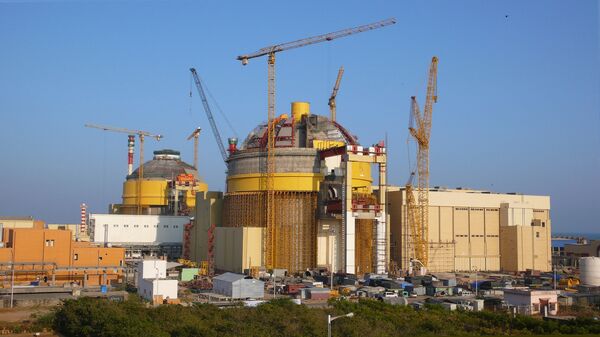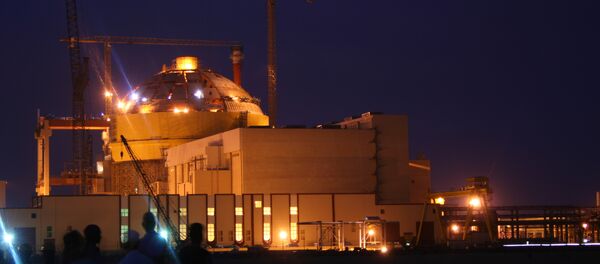"They [Putin and Modi] noted with satisfaction a series of positive developments marked in their civil nuclear cooperation this year, including attainment of full power capacity of Kudankulam Unit 1, integration with electricity grid of Kudankulam Unit 2, commencement of the site work for Kudankulam Units 3 and 4, and the progress in discussions on the General Framework Agreement and the Credit Protocol for Kudankulam Units 5 and 6 with a view to conclude these documents before the end of 2016," the joint statement after the bilateral meeting on the BRICS Goa summit sidelines said.
The leaders witnessed the laying of foundation concrete for Kudankulam units 3 and 4 through video broadcast at a ceremony in Goa.
The construction of the Kudankulam NPP was initially agreed by the Soviet Union and India back in 1988, but the project was in limbo. The Nuclear Power Corporation of India and Russia's nuclear agency Rosatom launched a much-delayed joint project to build the Kudankulam NPP in 2012. The first unit reached full capacity in July 2014, and is currently India’s most powerful reactor with a maximum operating capacity of 1,000 megawatt.
In late 2015, Russia and India announced plans to construct from five to six Kudankulam units, with units 3 and 4 being completed in 2016.




